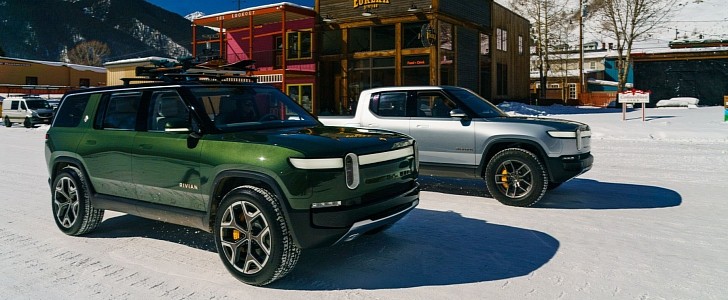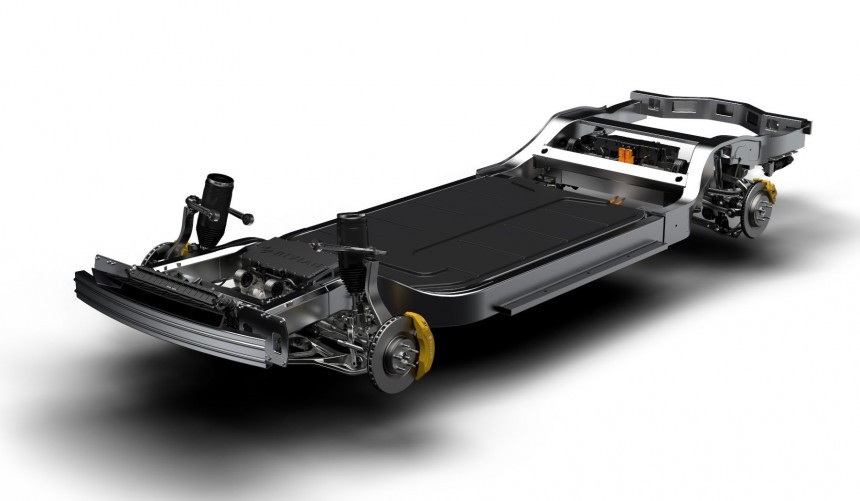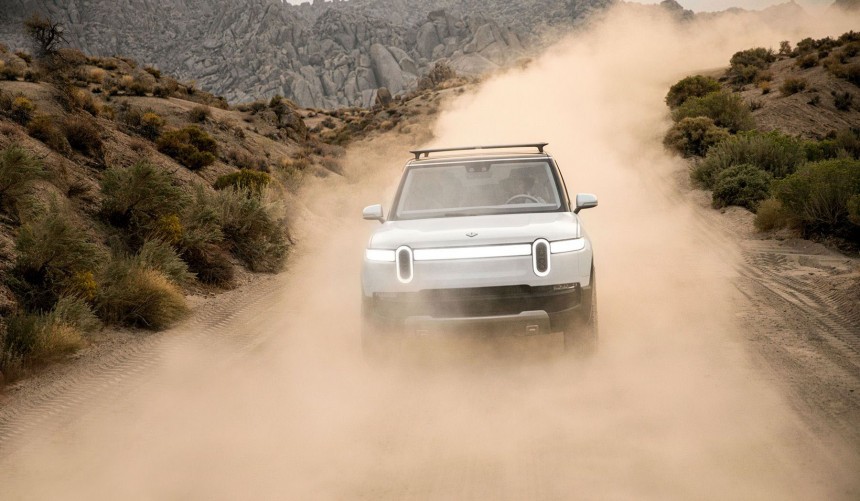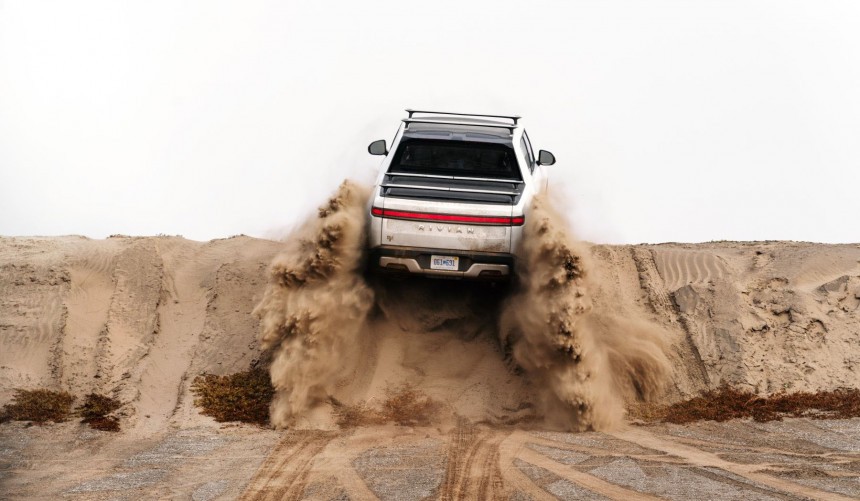The shift towards all-electric power in the automotive industry has seen the rise of new manufacturers who challenge the supremacy of well-established brands, driving them to rethink their propulsion systems. Among these new carmakers is U.S.-based Rivian Automotive, which has released an SUV and a pickup truck built on the same innovative ‘skateboard’ platform.
The company was founded in 2009 by MIT graduate Robert "RJ" Scaringe and, since 2011, its main focus has been manufacturing autonomous electric vehicles.
Since late 2018, development has centered on two adventure vehicles, the R1T truck and R1S SUV, that were supposed to enter production this year but were delayed due to the ongoing health crisis.
At the center of these vehicles stands the same platform. It features a quad motor layout capable of delivering power instantly and independently, giving the vehicles precise traction in any condition while providing significantly better torque control than conventional locking differentials.
The Rivian drive comprises two dual-motor units mounted on each axle. At the front, a compact 415 hp (310 kW; 421 PS) unit provides 413 lb. ft. (559 Nm) of torque and in the rear a higher-powered module delivers 420 hp (313 kW; 426 PS) and 495 lb. ft. (670 Nm) of torque.
Together, they supply remarkable performance, and with the use of torque vectoring, oversteer and understeer are neutralized, with stability and responsiveness exponentially increasing while off-roading and especially in the snow.
The innovative battery packs are positioned at the lowest possible point in the chassis and offer structural support to the vehicles. They are engineered and tested to withstand extreme conditions and a wide range of temperatures thanks to the enhanced thermal control that extends performance and driving range.
The batteries feature a smart management system built on Rivian's proprietary control algorithms and are designed for an extended lifespan. DC fast charging is available at over 200kW for sustained periods, and the system is designed to adapt and enhance performance based on charging habits, driving style, and weather conditions.
The platform uses an independent air suspension system that provides 6.5 inches (16.5 cm) of vertical adjustment, being able to drop the vehicle as low as 7.9 inches (20 cm) or raise it as high as 14.4 inches (36.5 cm).
This optimizes the right height for improved comfort, handling, aerodynamics, and stability with different payloads. The automatic ride-height leveling also drastically enhances handling when towing heavy loads as the R1T and R1S are capable of hauling up to 11,000 lbs. (4990 kg) on steep grades.
The suspension system also features active damping, which monitors road conditions and driver inputs every 5 milliseconds and adjusts damping rates accordingly.
Conventional anti-roll bars are replaced by an electro-hydraulic roll control system. On paved roads, the system reduces body roll to increase responsiveness, while in tougher off-road conditions it maximizes wheel articulation to deliver optimal traction and reduce ‘head toss’.
To protect the underbody, Rivian engineers developed a layered shield of high-strength steel, alloyed aluminum, and carbon fiber composite that absorbs, deflects, and distributes the forces resulting from impacts in the toughest off-road conditions.
The Rivian R1T pickup truck and R1S SUV are being built at the former Mitsubishi plant in Normal, Illinois, and will be available next year in a wide range of configurations.
Since late 2018, development has centered on two adventure vehicles, the R1T truck and R1S SUV, that were supposed to enter production this year but were delayed due to the ongoing health crisis.
At the center of these vehicles stands the same platform. It features a quad motor layout capable of delivering power instantly and independently, giving the vehicles precise traction in any condition while providing significantly better torque control than conventional locking differentials.
The Rivian drive comprises two dual-motor units mounted on each axle. At the front, a compact 415 hp (310 kW; 421 PS) unit provides 413 lb. ft. (559 Nm) of torque and in the rear a higher-powered module delivers 420 hp (313 kW; 426 PS) and 495 lb. ft. (670 Nm) of torque.
The innovative battery packs are positioned at the lowest possible point in the chassis and offer structural support to the vehicles. They are engineered and tested to withstand extreme conditions and a wide range of temperatures thanks to the enhanced thermal control that extends performance and driving range.
The batteries feature a smart management system built on Rivian's proprietary control algorithms and are designed for an extended lifespan. DC fast charging is available at over 200kW for sustained periods, and the system is designed to adapt and enhance performance based on charging habits, driving style, and weather conditions.
This optimizes the right height for improved comfort, handling, aerodynamics, and stability with different payloads. The automatic ride-height leveling also drastically enhances handling when towing heavy loads as the R1T and R1S are capable of hauling up to 11,000 lbs. (4990 kg) on steep grades.
The suspension system also features active damping, which monitors road conditions and driver inputs every 5 milliseconds and adjusts damping rates accordingly.
To protect the underbody, Rivian engineers developed a layered shield of high-strength steel, alloyed aluminum, and carbon fiber composite that absorbs, deflects, and distributes the forces resulting from impacts in the toughest off-road conditions.
The Rivian R1T pickup truck and R1S SUV are being built at the former Mitsubishi plant in Normal, Illinois, and will be available next year in a wide range of configurations.













